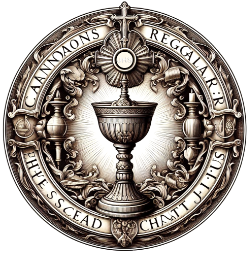Who are the Old catholics?
A Closer Look at the Old Catholic Tradition
“Independent Catholics are the fastest-growing form of Catholicism in the West.”
— John P. Plummer & John R. Mabry, Who Are the Independent Catholics?
In the ever-evolving landscape of Christianity, few movements are as quietly resilient and theologically rich as Independent Catholicism. Often misunderstood or overlooked, this diverse constellation of communities offers a compelling witness to sacramental life, apostolic succession, and pastoral inclusivity outside the jurisdiction of Rome. Among its many expressions, the Old Catholic tradition stands out for its historical depth, theological integrity, and enduring commitment to the faith of the early Church.
What Is Independent Catholicism?
Independent Catholicism refers to a broad movement of clergy and laity who identify as Catholic but operate outside the Roman Catholic Church’s Jurisdiction. These communities often form “micro-churches” that claim and demonstrate a valid apostolic succession with the utmost zeal and valid sacramental ministry, even though they are not juridically governed by the Holy See of Rome.
Notwithstanding, the Holy See of Rome recognises them as ‘True Churches’ of the One Church of Christ, as declared in Pope Saint John Paul II’s Encyclical “UT UNUM SINT” of 25th of May 1995, and even more in the DECLARATION ‘DOMINUS JESUS’ of 6th of August 2000, as stated in part 17:
The Churches which, while not existing in perfect communion with the Catholic Church, remain united to her by means of the closest bonds, that is, by apostolic succession and a valid Eucharist, are true particular Churches. Therefore, the Church of Christ is present and operative also in these Churches(…).
Many Independent Catholics - especially the Old Catholics - abide by the Liturgies approved by the Roman Catholic Church, whilst others may differ in liturgical expression or doctrinal nuance, they generally always share:
A commitment to the seven sacraments, especially the Eucharist, which Independent Catholics profess as being the Real Presence of Jesus Christ, i.e., Body, Blood, Soul and Divinity of Christ.
Apostolic succession through sacramentally valid lines, though not necessarily sanctioned by the Vatican.
A rejection of papal supremacy.
A pastoral openness to groups often marginalised in Roman Catholicism.
“Independent Catholicism is not a rebellion—it is a reclamation.”
— Plummer & Mabry
The Old Catholic Roots
The Old Catholic Church is one of the oldest and most historically grounded expressions of Independent Catholicism. Its origins trace back to the Netherlands in the early 18th century, when Archbishop Dominique Marie Varlet consecrated bishops without papal approval. This act of ecclesial defiance laid the groundwork for the Church of Utrecht.
The movement gained momentum after the First Vatican Council in 1870, when the dogma of papal infallibility was proclaimed. Many Catholics in Holland, Germany, Switzerland, and Austria objected, forming autonomous communities that came to be known as “Old Catholics”—not because they were antiquated, but because they sought to preserve the faith of the undivided Church.
What Do Old Catholics Believe?
Old Catholics affirm the core tenets of Christianity as expressed in:
Sacred Scripture.
The Nicene and Apostles’ Creeds.
The first seven Ecumenical Councils.
They uphold the sacramental life of the Church, including Baptism, Eucharist, Confirmation, Reconciliation, Anointing of the Sick, Marriage, and Ordination. Apostolic Succession is maintained with the utmost zeal through valid episcopal consecrations.
Key distinctions from Roman Catholicism include:
Papal Authority: Rejected in favour of collegial governance.
Clerical Celibacy: Optional.
Gender and Sexuality: Inclusive of women and LGBTQ+ persons.
Doctrinal Development: Cautious about post-schism dogmas.
“They are Catholic, but not Roman. They are sacramental, but not authoritarian.”
— Plummer & Mabry
Ecclesial Structure and Ministry
Old Catholic communities often operate with a synodal model of governance. Bishops are elected or appointed with the consent of clergy and laity, and decisions are made collaboratively.
Ministry is deeply pastoral and often adapted to local needs. Many clergy are bi-vocational, complementing their priestly and episcopal ordained calling with a secular job, whereby they participate fully in the Communities where they live and work. Their ministries include:
Eucharistic celebrations in homes or chapels.
Cooperation with Roman Catholic parishes and other mainstream churches, in the fields of Liturgy, Pastoral and Sacramental ministries.
Sacramental care for the sick and dying.
Weddings and funerals for those excluded elsewhere.
Spiritual direction and pastoral counselling.
“Where two or three are gathered in my name, I am there among them.”
— Matthew 18:20
Global Presence and Diversity
Though small in numbers, Old Catholic communities exist across Europe, North America, Latin America, and Africa. Some are part of the Union of Utrecht; others operate independently or are integrated into independent networks.
This diversity allows Old Catholics to respond creatively to contemporary issues while remaining rooted in tradition.
“They represent the diversity of beliefs within the Catholic faith.”
— Plummer & Mabry
Why Does It Matter?
In an age marked by polarisation and ecclesial rigidity, the Old Catholic witness offers a refreshing alternative. It reminds us that:
Catholic identity is not synonymous with Roman allegiance.
Apostolic succession and sacramental validity do exist outside Vatican structures.
The Church can be both ancient and adaptive, faithful and inclusive.
“Do not judge by appearances, but judge with right judgment.”
— John 7:24
For those disillusioned with institutional religion but still drawn to the beauty of Catholic worship and theology, Old Catholicism provides a spiritual home.
A Living Tradition
Old Catholics are not relics of a bygone era. They are living communities of faith, prayer, and service. Their liturgies are reverent, their theology thoughtful, and their pastoral care deeply compassionate.
“The Church is not a monolithic institution, but a community of people with a wide range of beliefs.”
— Plummer & Mabry
Whether celebrating Mass in a modest chapel or offering last rites in a hospice, they embody the Church’s mission to be present, sacramental, and healing.
“Blessed are the peacemakers, for they will be called children of God.”
— Matthew 5:9


